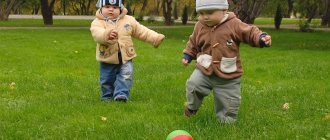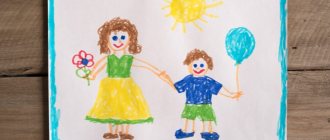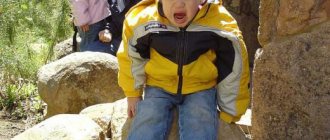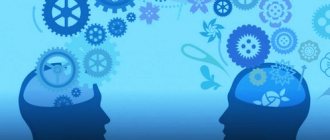Consulting
Indicators of a child's giftedness: a cheat sheet for teachers
Tatiana Vasilyeva
Associate Professor at IKBFU E. Kanta, Kaliningrad
One of the tasks of an educational psychologist in working with gifted children is to create conditions that will help them achieve high results in activities that interest them. It is equally important to tell teachers about the characteristics of these children, to give recommendations on what skills and abilities need to be developed in a gifted child.
Giftedness is a systemic quality of the psyche that develops throughout life, thanks to which a person achieves higher (extraordinary) results in one or more types of activity compared to the performance of other people.
| Giftedness unites cognitive, emotional, volitional, motivational, psychophysiological and other spheres of the psyche. Its signs can be permanent or temporary, obvious or hidden (potential). Giftedness can manifest itself in the form of a high level of development of general or special - intellectual, academic, artistic, psychomotor, leadership, technical - abilities. |
Children's giftedness levels
Giftedness develops in stages and manifests itself in the psyche of a particular child in varying degrees and forms.
The following levels of development of giftedness are distinguished:
1) mental process
, which:
· gives you the opportunity to try yourself in different types of activities;
· causes the appearance of selective interest and emotional involvement in activities;
· develops into giftedness if favorable conditions are created;
2) mental state
, which:
· arises quite often in a certain type of activity, is fixed, becomes bright;
· stimulates the desire to constantly seek and create situations for its experience;
3) personality trait
, properties that:
· turned desire, interest into the only meaning of life;
· have become a strong need for creativity in any situation, any activity.
Giftedness is a unique systemic quality of a particular child, a natural predisposition to realize his mental capabilities in a form of individual development that is optimal for performing socially significant activities of one or more types.
Methods for diagnosing human potential
The main methods for diagnosing giftedness are used by teachers and educational psychologists during face-to-face consultations. Specialists work in adult and pediatric profiles, respectively.
Regardless of age, it is necessary to establish basic factors:
- identification of the behavioral component, determination of personality types;
- the basic inclinations of a person, his interests and the determination of prospects, goals, desires in the future (for children this is the most significant moment, since based on the chain of reasoning, conclusions can be drawn regarding certain personality traits and character);
- intellectual abilities in different variations;
- creativity;
- volitional signs.
All this is established through differentiated and comprehensive tests for giftedness and its various aspects. Let's consider the main diagnostic methods.
Wechsler test
Varies depending on age. Determines the basic intellectual abilities of a person. Used most often. It is much more accurate than a standard IQ test due to a more variable approach, a wide range of questions and their selection. But it alone is not enough.
Torrens scale test
A standard way to test creativity and creative thinking. Involves the use of stimulating graphic material for work under the supervision of a psychologist. Unfinished figures, straight lines and others. The task is to independently supplement the presented materials. The interpretation is carried out by a specialist. Based on the results, a final score is assigned, which is precisely specified as one or another level of creativity. This is a moving indicator, it can be changed through training in creative thinking and approach.
The psychologist’s task at this stage is to check the current level of abilities and decide on a possible development program. It is compiled individually, focusing on the main aspects necessary in a particular situation.
Stanford-Binet test
Uses another technique for studying intelligence. It is mainly carried out when analyzing the abilities of children and adolescents when entering school and universities. It is actively used in Europe and the USA to study the mental potential of a child and the current characteristics of his intellectual makeup. It is a standard questionnaire, in many ways similar to the Eysenck study, with some deviations. Gives fairly accurate results. The interpretation is carried out in a system with other studies.
Study of Piaget's phenomena
Piaget's tasks make it possible to determine the degree of intellectual and creative potential from an early age, and to explore the degree of giftedness. It is used most actively in working with young people.
Ravenna Matrices
Graphic methodology for studying intellectual potential and the ability for analytical, spatial thinking. They are used not only to identify talent, but also to test professional suitability in certain places. The technique is extremely simple, but the results are highly informative.
Slossen test
Another modification of the study of mental abilities.
The tests primarily test the cognitive, mnestic component. As for the creative component, everything is much more complicated. The assessment is carried out dynamically, determined by conditional anamnesis.
Without fail, the psychologist conducts a series of personality tests. Including a study of character accentuation according to Leonhard and others to determine character traits. It cannot be done without an oral conversation aimed at identifying important factors: logic, non-standard thinking, reactions to various stimuli.
Diagnosis takes some time. It is usually too early to draw conclusions from the first session. Observation is necessary over several times.
Features of the educational environment for the development of giftedness
Children with a procedural level of giftedness development
need a type of educational environment that would serve as a means of revealing and developing natural inclinations. Her features:
· focus on the sensory-perceptual sphere of the child;
· maximum variability, variety (from handicrafts to writing fairy tales, etc.);
· the ability to arouse curiosity, and then interest.
For each child in such an educational environment, adults (teachers, parents) provide opportunities and create conditions to try themselves in the maximum number of activities (in the educational process, clubs, art schools, etc.).
Children with giftedness at the mental state level
need a type of educational environment that would serve as a means of making it possible to more frequently experience the state of the creative act. Such an environment should:
· promote operational training;
· be full of situations that stimulate creative activity;
· support the development of creative thinking;
· contribute to “living a state of success.”
Children with a personal level of giftedness
need a type of educational environment that would serve as a means of personal development and self-affirmation. Its features: tension, maximum saturation in subject content and moral and ethical values. She must:
· satisfy the child’s need to perform activities that interest him (forms of work - from individual to special groups and special schools);
· be a means of personal development and self-affirmation;
· provide conditions for participation in competitions, competitions, olympiads, etc.
It is important that the child sees that he is not the only one who is passionate about the activity, so that he has the opportunity to realize his personal aspirations.
Teachers, working with gifted children, must create conditions that would maximize the manifestation of giftedness as an emerging systemic quality, the disclosure and optimal manifestation of the nature of the child’s psyche.
Indicators of child giftedness
Indicators of giftedness can be conditionally divided into five areas: intellectual, creativity, communication and leadership, artistic activity, and motor.
1. Intellectual sphere
Indicators:
observation, good memory, ability to express thoughts, good general awareness, rudiments of mental operations (analysis, synthesis, comparison, generalization), conceptual thinking (intuitive, logical, verbal, figurative).
Scope of academic achievements:
· reading
- the child chooses reading as his frequent activity; demonstrates a rich vocabulary; rudiments of voluntary speech skills; sensitivity to the syntactic structure of speech; wishes to demonstrate reading ability; maintains attention when reading;
· mathematics
— the child shows interest in calculations, measurements, and ordering of objects; demonstrates ease of perception and memorization of mathematical symbols; the ability to easily understand the measurement of time and money; sensitivity to number composition;
· natural science
- the child pays attention to objects and phenomena of the world; interest in curious facts, natural phenomena, the origin of objects and phenomena.
| 2. Creativity Indicators: inquisitiveness; curiosity; the ability to “throw yourself headlong” into an activity; high energy level (doesn’t get tired when doing creative work); the desire to do things your own way; ingenuity in gaming and visual activities. 3. Communication and leadership Indicators: the child easily adapts to new conditions; other children prefer to choose him as a play partner; in communication he maintains self-confidence; easily appeals to adults; can accept responsibility. 4. Artistic activity A preschooler can express himself in the visual arts and music. Indicators: · art — the child demonstrates interest in visual information; remembers in detail what he saw; spends a lot of time drawing, modeling, etc.; enjoys these activities; uses original means of expression; pays attention to detail; · music - the child shows interest in music lessons; reacts sensitively to the mood of the music; easily reproduces the rhythm; recognizes a familiar melody by the first sounds. 5. Motor sphere Indicators: interest in activities requiring fine and precise motor skills; good hand-eye coordination; love of movement; wide range of motion; the child maintains balance well; has good tempo; demonstrates a high level of mastery of motor skills. |
Are all people inclined to one activity or another? What influences the prospects for development and progress?
To one degree or another, yes. All people. The answer to the question is yes. Further, the prospects for the formation of a personality according to one type or another, the disclosure of inherent potential, all this is determined by a group of factors.
Social environment
Plays almost the main role in the lives of children. It all depends on what parenting model the parents use. Under the imperative model, when the commanding nature of relationships and a strict vertical in determining the child’s behavior prevail, initiative is gradually lost. A person becomes pliable, lethargic, and is not ready to deal with difficulties. Characterized by increased conformity, agreement, and action of the “like everyone else” type. This creates big problems in terms of implementation and can quickly put an end to the most talented person. When the partnership or free model prevails, the potential is most fully revealed. This is the most correct model of behavior that does not oppress the individual and does not involve the use of violence in its various types.
Tendency to learn independently
Determined again by the model of education. But with sufficient development, independent further existence of the quality is possible, despite the harsh imperative methods of the parents. In the process of forming the necessary personality traits, the child is able to independently analyze and think. This is the main way to achieve potential. Especially when it comes to intellectual and academic forms.
Sensitivity
Increased sensitivity to environmental stimuli. In particular, we are talking about a combination of good memory, the ability to reproduce facts and phenomena, quickly assimilate new information, learn and progress even without outside help. Although at a slower pace. The development of giftedness in this context proceeds faster under the control of mentors.
Physical aspects
In this case, there is a health condition. Some diseases initially put you at a disadvantage: poor vision, insufficient hearing acuity, and others. They make it difficult to develop the skills and abilities needed. Sometimes they completely put an end to the possibility of implementation in a certain area. This issue needs to be considered on the spot, depending on the situation.
Personality type that determines the type of behavior
Temperament, propensity for social contacts, other factors. They leave a certain imprint on the speed of progress and disclosure of inclinations.
A large role is given to the hereditary factor
Many factors are inherited, including some behavioral characteristics and intellectual potential.









